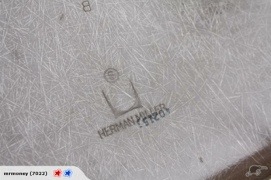The Dominion Building situated on the corner of Mercer and Victoria streets was designed by the architectural firm of Crichton, McKay and Haughton and was “purpose-built as a printery and offices for the Dominion Post in 1926 to 1928.” (para. 3, Wellington City council, n.d). The size and style of the building, its position in the city and the materials used in its construction point to the place newspapers had at the time as the prominent means of mass communication.
The Dominion was built during the interwar years, during a period of “dramatic technological change” that saw the increasing usage of electricity and access to more modes of transportation; the growing power of capitalism, and a need to move on from the devastation of the first world war. (Benton, Benton & Wood, 2003).
The building has a symmetrical façade that echoes the curve in the street and a central shaft “capped with a copper roofed turret” (para. 2, Wellington City council, n.d). There is a modernist influence in the use of rectilinear geometry of the vertical lines of the columns, mullions and dimensions of the windows that cause the eye to move vertically up the building and minimal surface decoration. (Wood, 2003). The decorative elements that there on the outside are geometric in nature: the dark, pressed-metal spandrels feature circles and diamonds; there is a pattern of squares around the main entrance, neoclassical columns and ornamentation, and two electric lights that bring to mind lady liberty’s torch. The interior has a feel of ancient Rome about it with its arched ceiling, columns, the archway framing the stairwell. The building features an imported Caen stone frontage and extensive use of Queensland marble in the interior. This use of multiple design styles, geometric decoration, luxurious imported materials and the period in which it was built are indicative of the eclectic nature of the art deco style with its mix of modern and traditional, use of pure geometric forms “such as the circle, the square or the line” (p.56, Wood, 2003).
References
Benton, C., Benton, T., & Wood, G.. (2003). Art Deco 1910-1939. London, England: V & A Publications.
Wellington City Council. (n.d). Heritage Inventory.
Retrieved from http://www.wellington.govt.nz/services/heritage/details.php?id=270&m=search&building=Dominion
Wood, G.. (2003). Essential Art Deco. London, England: V & A Publications.



